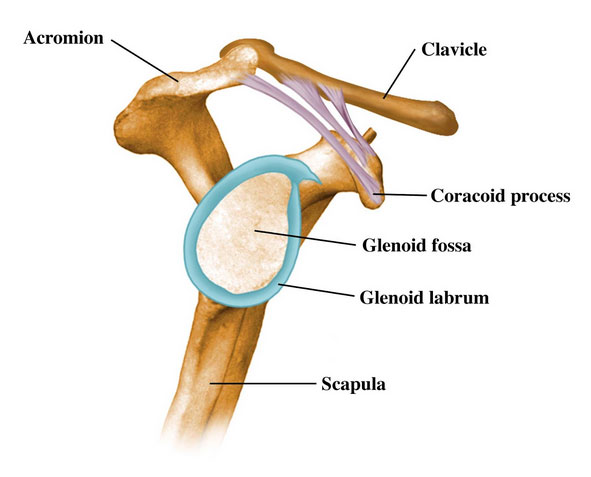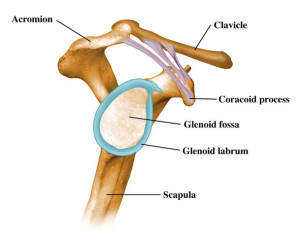Hey everyone, Dr. Lell here. Today’s topic is shoulder impingement syndrome; a common condition that is often under investigated. There are four kinds of this condition but I’ll cover the most common one – Primary Mechanical Impingement. Let’s go over some of the simple anatomy first.
Basic Anatomy Of Shoulder Impingement
The important players are the
- The scapula (shoulder-blade),
- The supraspinatus muscle (posterior rotator cuff)
- A tunnel called the subacromial space. The space is what’s really important.
Take a look at the diagram. That unlabeled space above the fossa and below the acromion / clavicle is the subacromial space (let’s just call it the space).
That’s about as technical as we’ll get!
Causes of Impingement Syndrome
What causes impingement syndrome? -Anything that causes that area in the space to get smaller. The big three things that cause this are:
- The contents in the space gets bigger. There’s stuff in that tunnel. Most notably, the supraspinatus muscle and a bursa. If a person is using that arm a lot (swimming, working overhead, throwing), it can irritate and inflame that muscle. I usually see this in the younger athletic population.
- The walls of the tunnel get bigger. Years of wear and tear or a single large injury can change the joints and bones making the amount of free area in the space smaller. Alternatively, some people are born with a misshapen bone; this will have the same effect.
- The scapula isn’t stable during movement. The roof of the space is the scapula. The scapula isn’t strongly locked into place like other bones of its size. It’s held down by many muscles coming from many different directions. If those muscles are misbalanced, the scapula can have too much wiggle. This scapular instability or scapular dyskenesis is what I see the most of in non-athletic patients under 60; especially in people who sit at computers a lot.
Research Update!! Feb 27, 2020
Since this post, more information about shoulder impingement has come available.
Before, the common element of all scenarios causing impingement had to deal with the tendon getting aggravated or damaged by the bone on top. But someone looked at the tendons of people with various stages of impingement. They found that the first bit of damage occurs on the underside of the tendon, not the top (where the bony roof is). This suggests that a weakness or deconditioning of the tendon itself happens before the swelling and other factors.
What changes clinically?
With the new understanding, it’s very important to properly care for and recover from shoulder injuries. It’s also important to be able to move your shoulder fully without any discomfort or snags. These things will go a long way in preventing impingement syndrome. But if you already have it, care should focus on restoring pain free range of motion and exercises that strengthen the tendon. Easy band exercises go a long way in the clinic and home.

